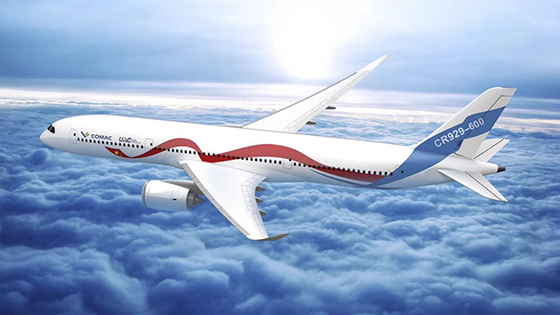Leeham News and Analysis
There's more to real news than a news release.
Leeham News and Analysis
Spies and industrial spying
By Scott Hamilton
March 27, 2018, © Leeham News, Bainbridge Island (WA): The unexpected US order to close the Russian Consulate in Seattle this week set off a media frenzy in this city because two reasons cited were the proximity of the consulate to Boeing and two US naval bases, Bremerton and Bangor.
There is a third, smaller one, in Everett, but this wasn’t mentioned.
Bremerton is a major repair-and-overhaul base for ships, ranging from aircraft carriers to submarines to frigates and support ships.
Bangor is home to Trident nuclear missile subs and the spy sub, USS Jimmy Carter.
I live on Bainbridge Island, a stone’s throw to Bangor (ground zero in a North Korean nuclear missile attack?) and a 45-minute drive to Bremerton. It’s 45 minutes from here to Boeing Field via ferry and car.
Boeing, of course, is the principal home to Boeing Commercial Airplanes. The commercially-based P8 Poseidon and the KC-46A tankers are built here.
Posted on March 27, 2018 by Scott Hamilton
Airbus, Boeing, Bombardier, China, Comac, McDonnell Douglas, Mitsubishi
737 MAX, 747-8, 777 Classic, 777X, 787, A320, Airbus, ARJ21, Boeing, C919, Comac, DC-9, McDonnell Douglas, MD-80, Russia
China tariffs on Boeing unlikely
Analysis
March 14, 2018 © Leeham News: Boeing is unlikely to face retaliatory tariffs from China following President Trump’s imposition of tariffs on China’s steel industry.
LNC believes China’s own self-interest for its airline, leasing and aerospace industry would make imposing tariffs on Boeing counter-productive.
Several media reports this week raise the prospect of China retaliating against Boeing, including these at CNBC and The New York Times. Boeing stock is off $10 or 3% in mid-day trading.
Posted on March 14, 2018 by Scott Hamilton
Chinese and Russian Widebody takes shape. Part 4.
By Bjorn Fehrm
Subscription Required
Introduction
February 1, 2018, © Leeham Co.: In the third article about the Chinese/Russian widebody, CR929, we looked at the challenges the aircraft poses to the involved manufacturers. Now we continue with analyzing the project’s engine needs.
The CR929 is sized to use engines from the Boeing 787 project. Both GE Aviation and Rolls-Royce got Request for Proposals (RFPs) on 22 Dec. 2017. In addition, the Russian and Chinese engine industry wants to develop an engine for the project.
Summary:
- The Chinese and Russian widebody program needs engines in the 75,000lbf thrust class.
- The project’s engine specification is closely modeled after the engines available from the Boeing 787 project.
- In addition to the available 787 engines, the Chinese and Russian engine industry is trying to unite behind a joint engine proposal.
Posted on February 1, 2018 by Bjorn Fehrm
Chinese and Russian Widebody takes shape. Part 3.
By Bjorn Fehrm
Subscription Required
Introduction
January 25, 2018, © Leeham Co.: In the second article about the new Chinese/Russian widebody, CR929, we looked at the size of the aircraft and its passenger capacity. The CR929 can be best described as a shorter range version of Boeing’s 787-9. We also presented the chosen technologies for the project.
Now we continue and look at the challenges the aircraft poses to the involved manufacturers. Neither of them (COMAC of China and United Aircraft of Russia) have developed and certified an aircraft like the CR929 before.
 Summary:
Summary:
- The Chinese and Russian widebody program has high ambitions. The structure shall be composites and the systems state of the art.
- We now go through the aircraft’s chosen technologies and review what experience base the Chinese and Russian aeronautical industry has and what challenges they will face. Read more
Posted on January 25, 2018 by Bjorn Fehrm
Chinese and Russian Widebody takes shape: Part 2.
By Bjorn Fehrm
Subscription Required
Introduction
January 18, 2018, © Leeham Co.: In the first article about the Chinese/Russian widebody, the CR929, we described the route to a joint program company and the launch of the project.
We now analyze the aircraft, based on available information. With the information, it’s possible to model the aircraft in our performance model and get the first understanding of performance and efficiency.
 Summary:
Summary:
- The CR929-600 is closely modelled after the Boeing 787-9. The overall design and dimensions are similar.
- The major difference to the 787-9 is in cabin width, allowing comfortable nine abreast seating, and the Maximum Take-Off Weight (MTOW).
- The decision to design CR929-600 for a lower MTOW has restricted range to 6,500nm with the nominal cabin capacity of 280 passengers.
Posted on January 18, 2018 by Bjorn Fehrm
Chinese and Russian Widebody Project takes shape
By Bjorn Fehrm
Subscription Required
Introduction
January 15, 2018, © Leeham Co.: The Chinese and Russian Widebody program started in earnest over the last year. After signing a joint venture agreement in 2016, the project now has a joint management company, CRAIC, formed 22nd of May 2017, and standing for China-Russia Commercial Aircraft International Corporation.
The company will have final assembly and management located in Shanghai. The aircraft has also got its final name, CR929-600. It will hold 280 passengers in a three-class cabin with a range of 6,500nm, Figure 1.

Figure 1. The CRAIC CR929-600, the main aircraft in the Chinese-Russian widebody program. Source: CRAIC.
Summary:
- The Chinese and Russian widebody program has taken off after the joint company was established spring 2017.
- The organization of the company is set, with the Chinese taking the rudder by the power of a five times larger market and economy and a 10 times larger population.
- The joint company, CRAIC, issued its first vendor RFP to GE and Rolls-Royce before Christmas for the aircraft’s propulsion system.
Read more
Posted on January 15, 2018 by Bjorn Fehrm
Pontifications: 2018 is a year of Transformations
Jan. 8, 2018, © Leeham Co.: This is going to be a year of transformations.
This might be viewed with puzzlement by some. After all, only minor-modification models will be entering service this year: the Airbus A350-1000, the Boeing 737-9, the Airbus A319neo and the Boeing 787-10. The first flight of the 737-7 should occur.
Flight testing continues for the Mitsubishi MRJ90, the COMAC C919 and Irkut MC-21.
The proposed deal between Airbus and Bombardier should receive government approvals this year. Talks between Boeing and Embraer may or may not result in a combination of some kind.
The Big Deal, however, resides in Everett (WA).
Posted on January 8, 2018 by Scott Hamilton
Airbus, Airfinance Journal, Boeing, Bombardier, China, Comac, CSeries, E-Jet, Embraer, Irkut, Leeham Co., Mitsubishi, MOM, New Midmarket Aircraft, NMA, Pontifications
737-7. 737-8, A321neo. a321neo Plus. 777X, Airbus, Airfinance Journal, Boeing, Bombardier, Comac, Embraer, Irkut, Mitsubishi, New Midmarket Airplane, NMA. MOM, Southeast Aerospace and Defence Conference
United Aircraft’s and COMAC’s eventful year
By Bjorn Fehrm
January 03, 2018, ©. Leeham Co: Both United Aircraft Corporation (UAC) and COMAC got their single-aisle airliner projects into flight test during 2017. The MC-21 and C919 had their first flights within less than a month of each other, with the Chinese C919 first at 5th of May, followed by the Irkut MC-21 on the 28th of May.
Superficially the aircraft and projects are similar. Both are 150-220 seat single aisle projects in the mold of Airbus’ A320neo and Boeing’s 737 MAX programs. Looking a bit closer, they are different. One is extending the state of the art in several areas; the other is playing safe.
Posted on January 3, 2018 by Bjorn Fehrm
Bombardier’s bittersweet year
Dec. 28, 2017, © Leeham Co.: Two thousand seventeen had to be a bittersweet year for Bombardier.
Despite landing two good, blue-chip orders in 2016—Air Canada and Delta Air Lines—it hadn’t achieved the “commercial momentum” hoped for. At long last, Letters of  Intent for 31+30 and 12+12 orders and options were announced this year for the CS100 and CS300 from an Unidentified European carrier and Egyptair respectively. Officials hope to firm these up by the end of this year.
Intent for 31+30 and 12+12 orders and options were announced this year for the CS100 and CS300 from an Unidentified European carrier and Egyptair respectively. Officials hope to firm these up by the end of this year.
No additional C Series orders were forthcoming for the rest of 2016 and none for 2017 when Boeing stepped up and puked all over the program.
In April, Boeing filed a trade complaint with the US government. Boeing would prevail with the US Department of Commerce, which preliminarily determined to levy a 300% tariff on each C Series imported into the US.
The US International Trade Commission took up the case Dec. 18; a decision is due next month. If ITC finds there was no harm to Boeing, the DOC decision goes away.
Posted on December 28, 2017 by Scott Hamilton
Business case for NMA remains uncertain
Subscription Required
Introduction
July 17, 2017, © Leeham Co.: We’re half way through 2017. Boeing reported orders through July 11, a week ago. Airbus won’t update its July orders until the end of the month.
Through July 11, Boeing reported 116 net wide-body orders: 15 for the 767, 33 for the 777 and 75 for the 787. Net cancellations of -7 for the 747 are included in the net 116 figure.
The 15 767s were not commercial models, however, but 767-2C tankers for the USAF.
Over at Airbus, none of China’s 40 commitments announced July 5 for 40 A350s are in the June summary, and won’t be in the Orders tally until the commitments turn into firm orders. Through June, airbus had net 26 widebody orders: three A330-200s and 29 A350-900. There were cancellations of four A330-800s and two A380s.
If the 40 China A350s were included, this would bring Airbus to 66 widebody orders, still well short of Boeing’s YTD figure.
Summary
- Airbus product gap widens as A330-200/800 stalls.
- Boeing 787 strength comes from 787-9; 787-8 remains minor player.
- Middle of the Market business case still unproved.
Posted on July 17, 2017 by Scott Hamilton



